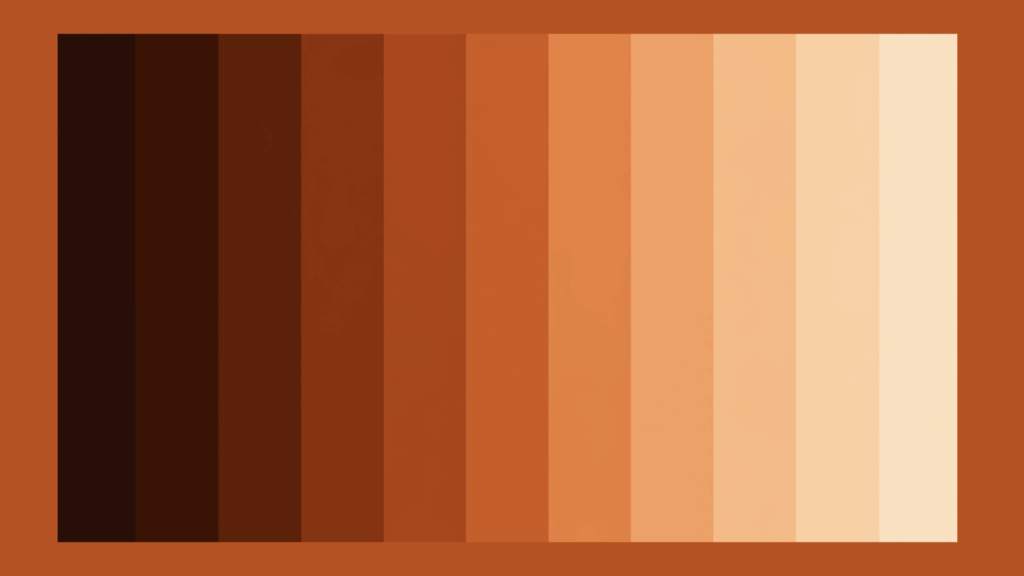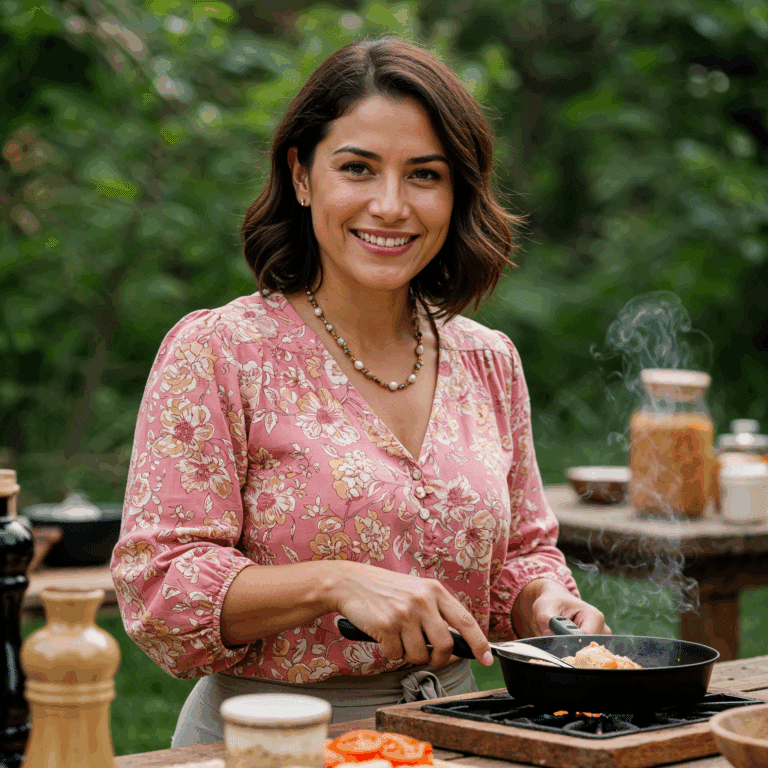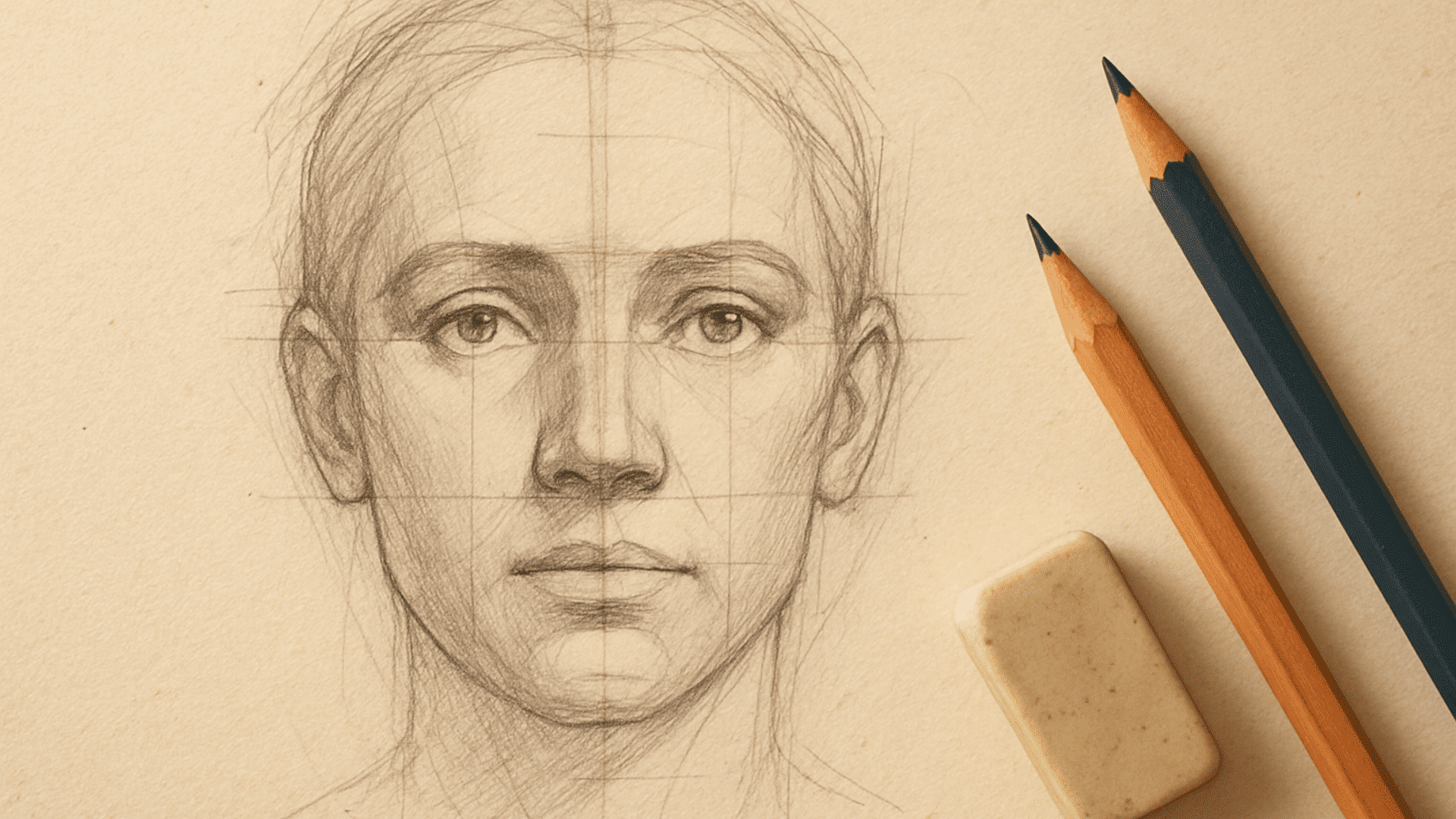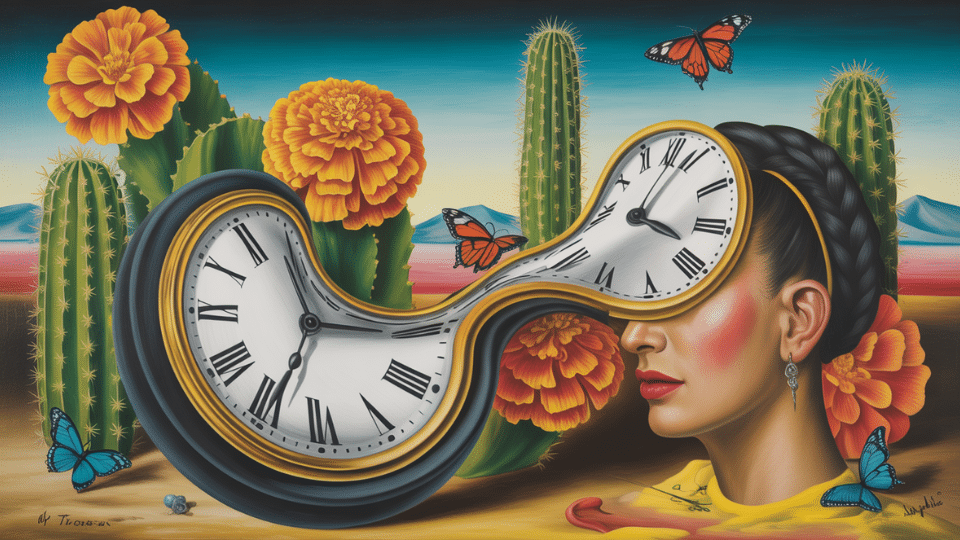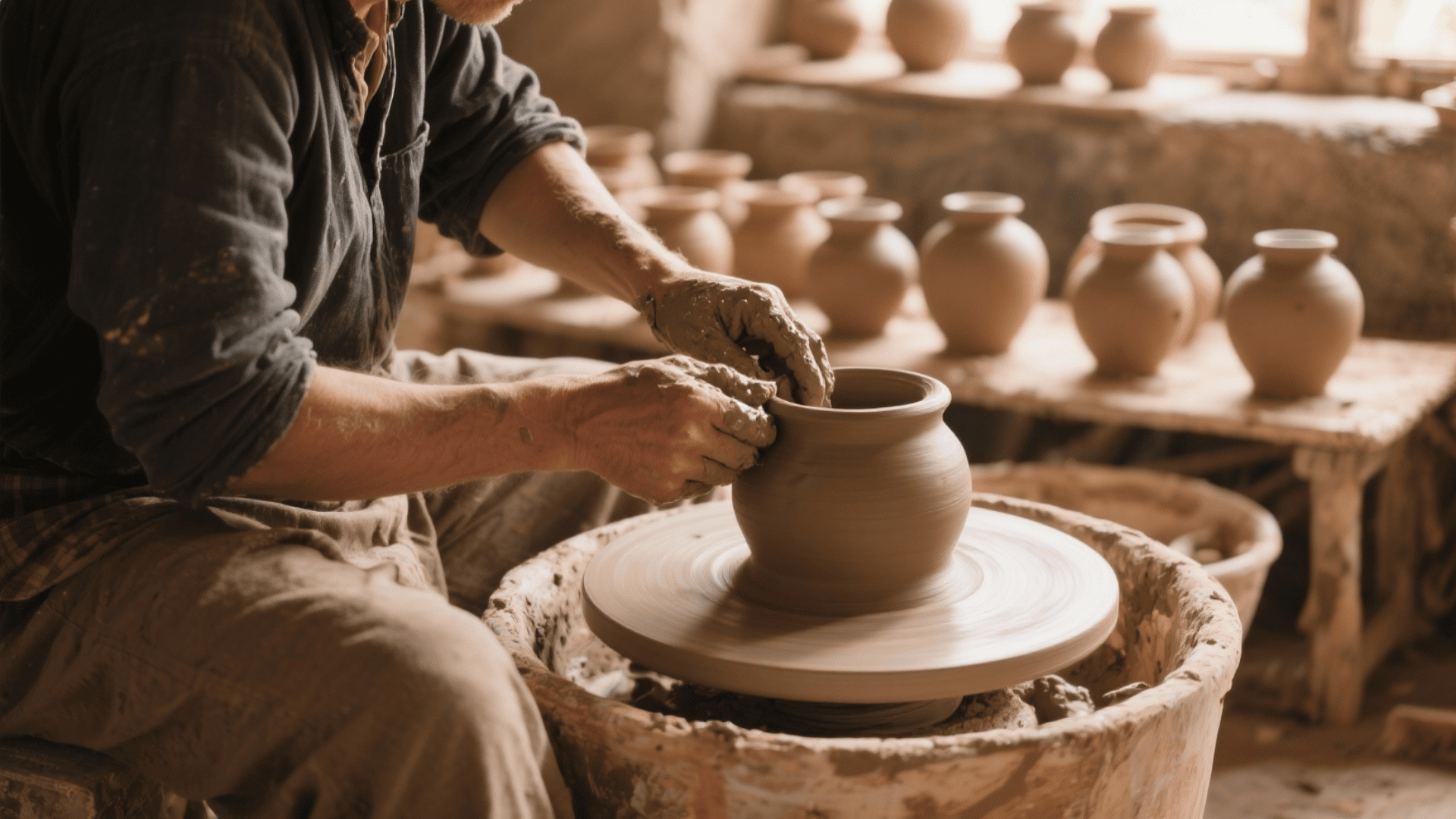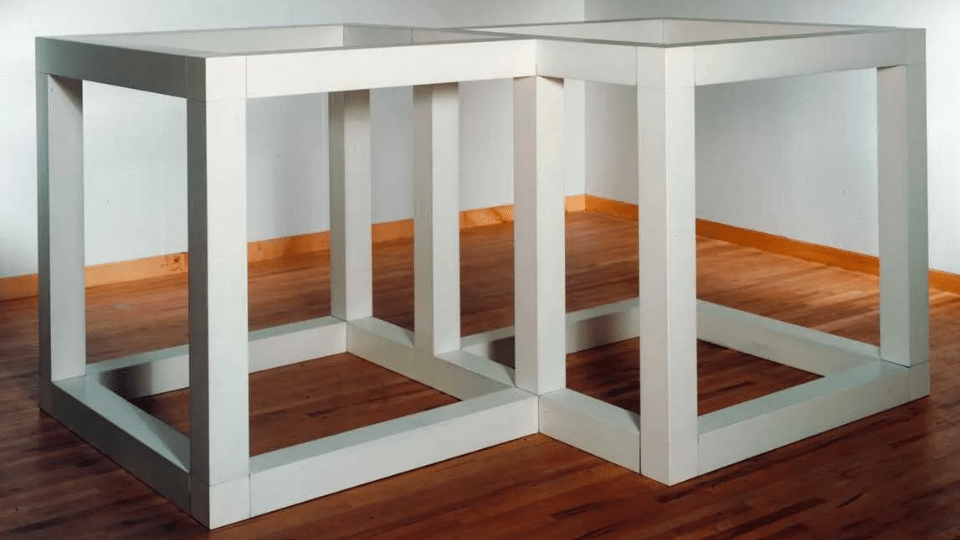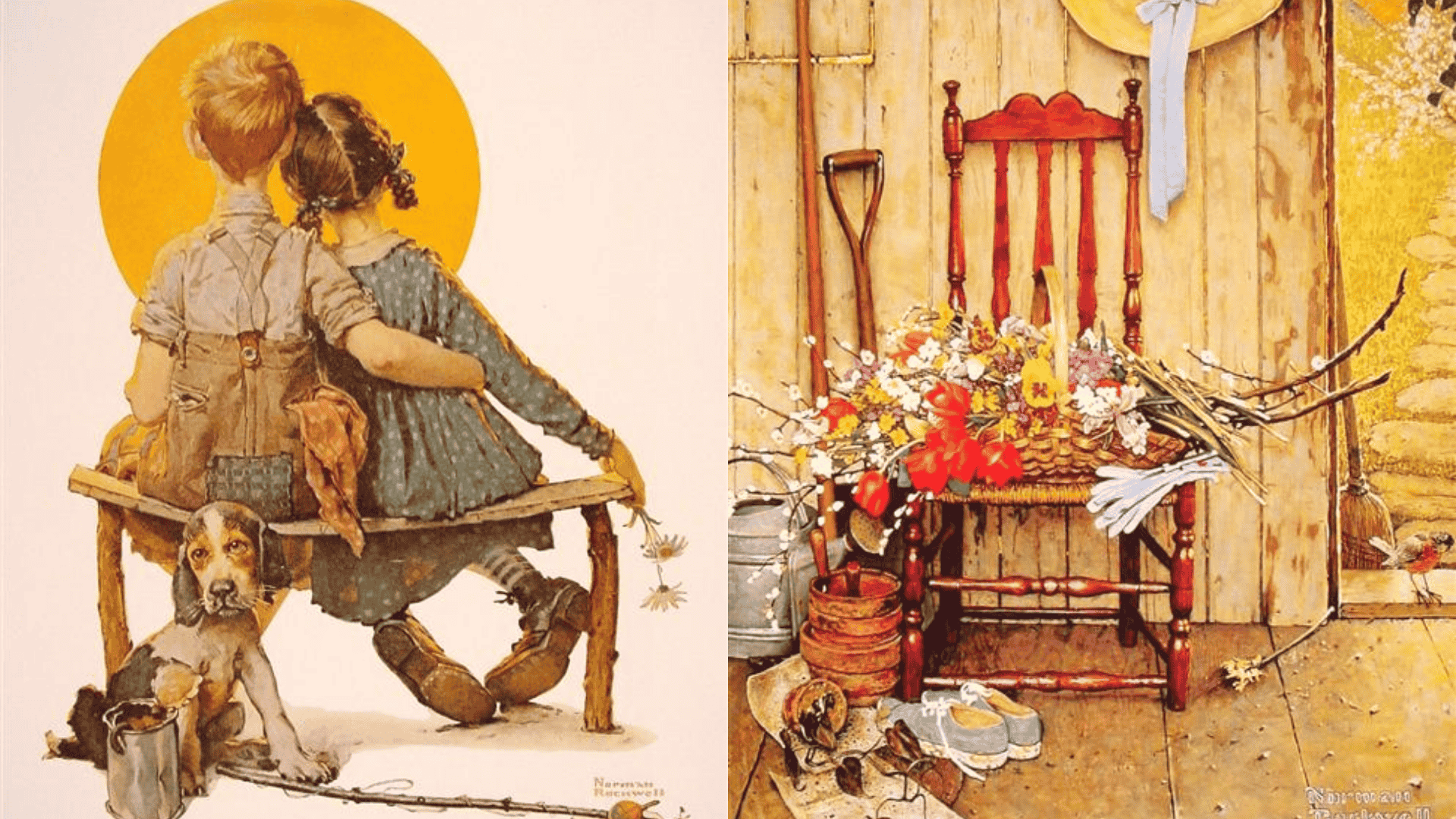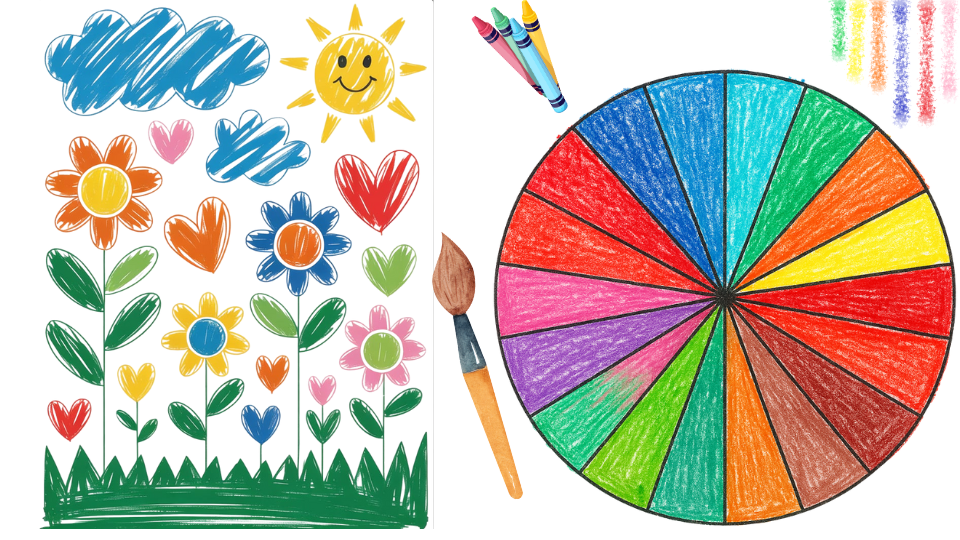Every artist knows the struggle of running out of the perfect shade right when it is needed brown may seem simple, but it adds depth to trees, soil, shadows in painting and even lifelike skin tones.
Learning how to make brown is simpler than many think, and it all comes down to mixing primary colors with care.
By adjusting the balance of red, blue, or yellow, an artist can create a wide range of warm, cool, light, or dark shades.
Small changes in the mix can significantly alter the entire mood of a painting and lend it character. With just a few paints and a little patience, anyone can start creating colors that feel natural and lively.
Why Brown Color Matters in Art?
Brown might look ordinary at first glance, but it is one of the most important colors in an artist’s toolkit.
It brings warmth, balance, and realism to a painting. Without it, scenes of nature, portraits, and everyday objects would feel flat or incomplete.
In landscapes, brown is evident in the soil, trees, rocks, and even the shadows that accentuate the greenery. In portraits, it helps create lifelike skin tones and natural hair shades.
Even in still life, brown adds depth to wood, fabric, and foods like bread or coffee.
The beauty of brown lies in its flexibility. It can be warm, like cinnamon, or cool, like deep earth, depending on how it is mixed.
Learning how to control these shifts gives artists the freedom to set the mood and bring subtle richness to their work.
How to Make Brown: Complete Step-by-Step Tutorial
Find this in-depth tutorial with step-by-step instructions on creating various shades of brown, including one that utilizes primary colors.
Tools and Materials Needed
| Item | Purpose |
|---|---|
| Red paint (e.g., Pyrrole Red or Cadmium Red) | Base color for mixing browns |
| Blue paint (Ultramarine Blue, Phthalo Blue) | To darken, cool, or neutralize reds and oranges |
| Yellow paint (Cadmium Yellow Medium, Hansa Yellow) | To lighten, warm, or balance browns |
| Black paint (Carbon Black) | For deep, dark chocolate browns |
| White paint (Titanium White) | For lightening browns into tints or skin tones |
| Secondary colors (Orange, Green, Purple) | Useful for quick complementary mixes |
| Palette knife & palette | For mixing and testing colors |
| Scrap paper or canvas | To swatch and test shades as you mix |
Follow these seven steps to create your desired shades of brown in a simple way. They are convenient and easy to follow. Start now:
Step 1: Start with Red and Black
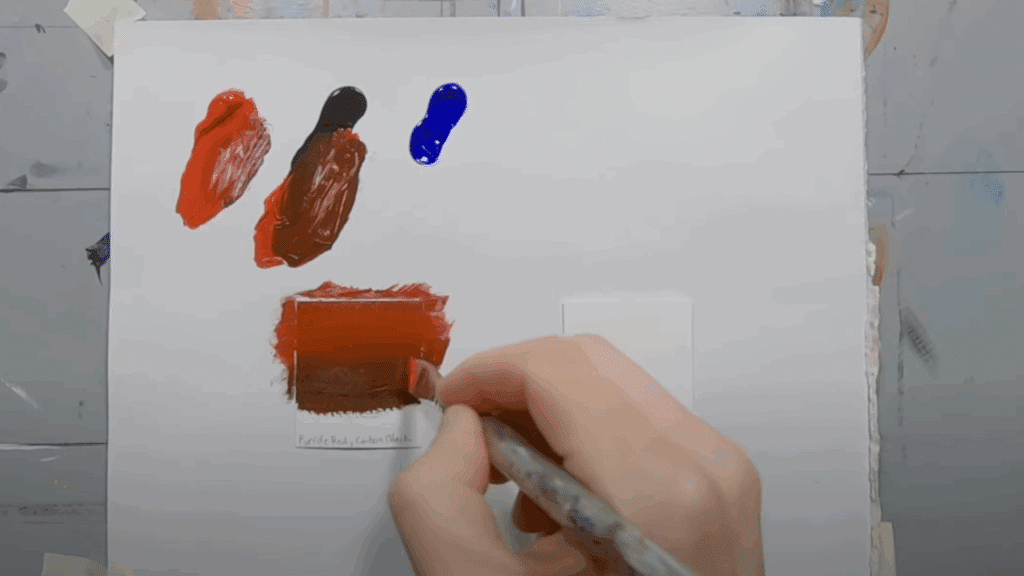
Place a small amount of red on your palette and gradually add black. At first, it creates a darker red, then shifts into a rich, chocolate-brown as more black is introduced. This is one of the easiest ways to make a dark, earthy brown.
Step 2: Mix Red and Blue for a Deeper Brown
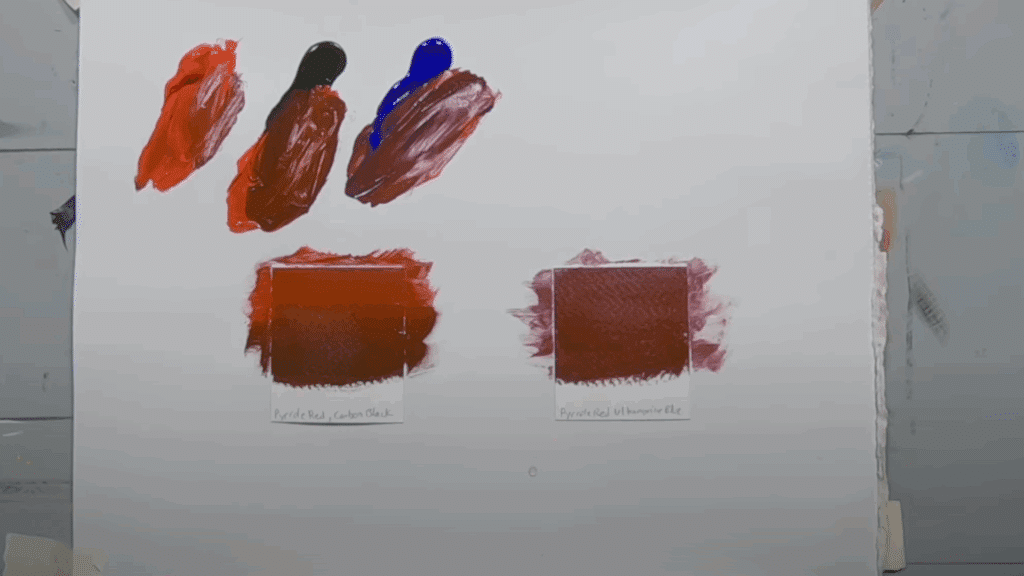
Combine pyrrole or cadmium red with ultramarine blue. While you might expect purple, the balance of pigments creates a dark brown instead. Add more blue for a cooler, slightly purplish tone, or more red for a warmer finish.
Step 3: Use Orange and Black for Lighter Browns
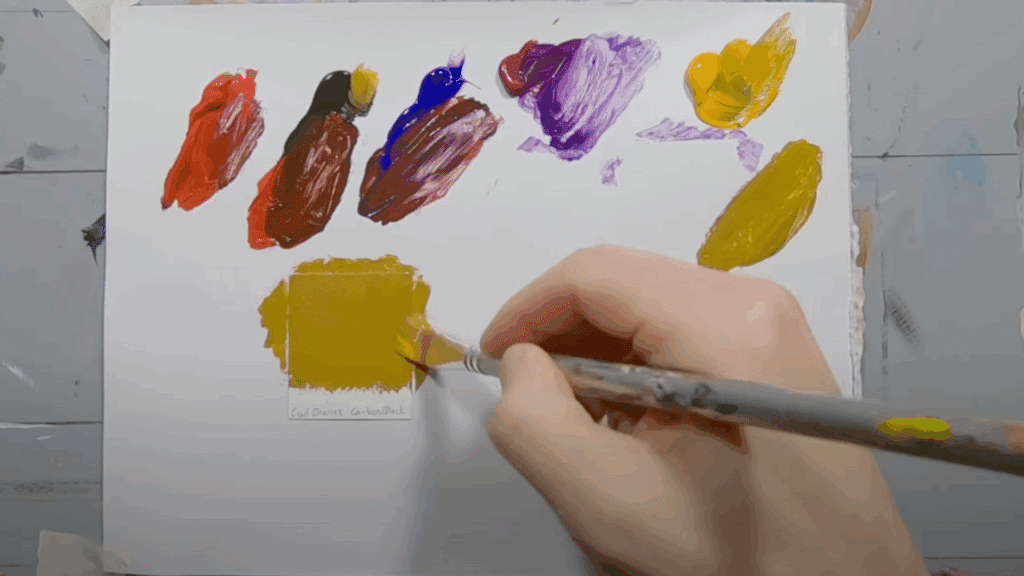
Mix orange with black to create a warm brown that resembles yellow ochre or raw sienna. Adjust the amount of black to shift between brighter, orange-brown shades and muted, earthy tones.
Step 4: Experiment with Orange and Blue
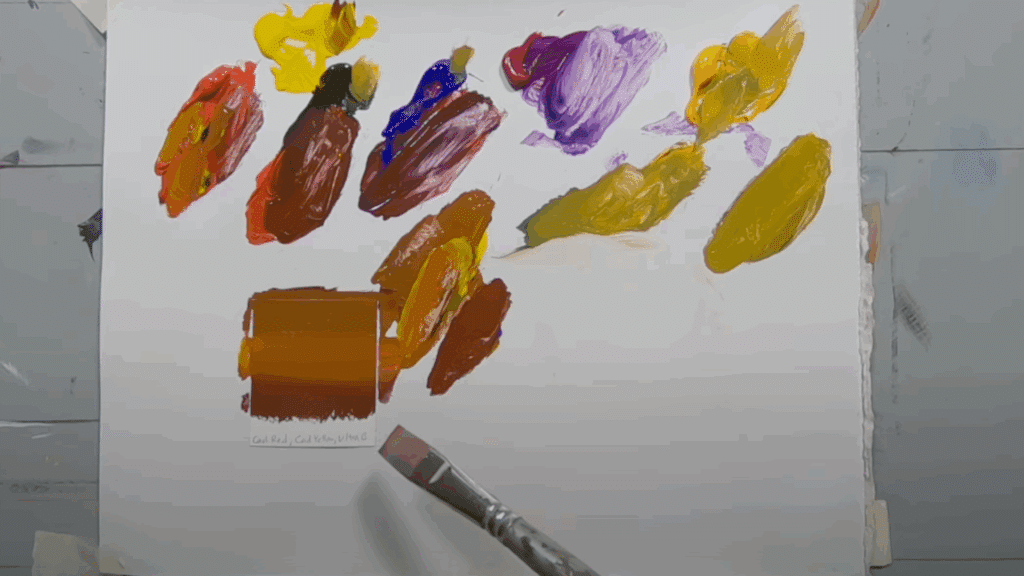
Pair cadmium orange with ultramarine blue. If the blue is added in small amounts, the mix produces a balanced ochre-like brown. Too much blue will push the shade toward green, so adjust slowly for the right effect.
Step 5: Create Browns from Primary Colors
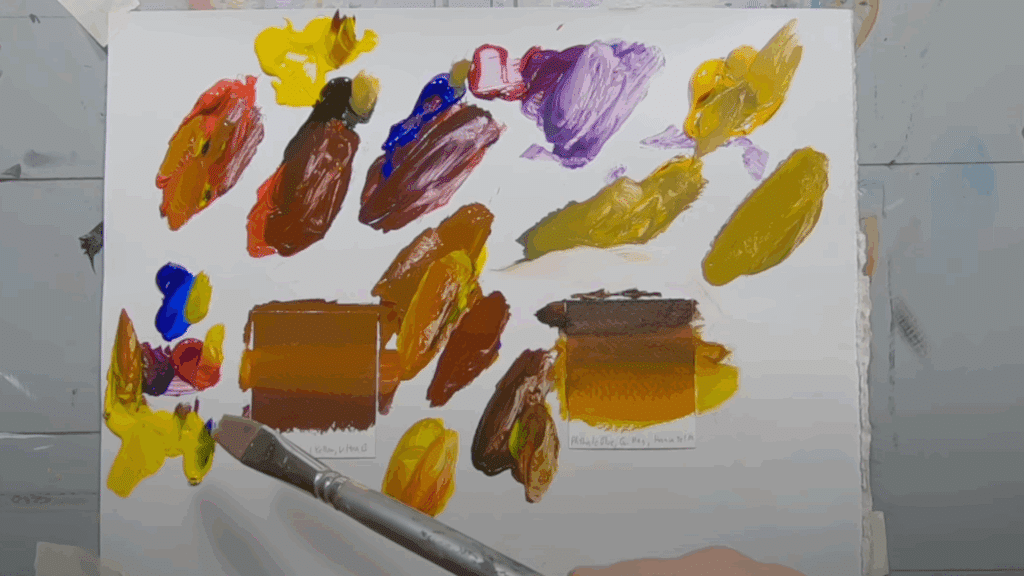
Use the classic trio of red, yellow, and blue. Equal amounts make a balanced medium brown, while altering the proportions allows for variety. More red and yellow for a warm tone, more blue for a cooler, darker brown.
Step 6: Try the CMY Approach
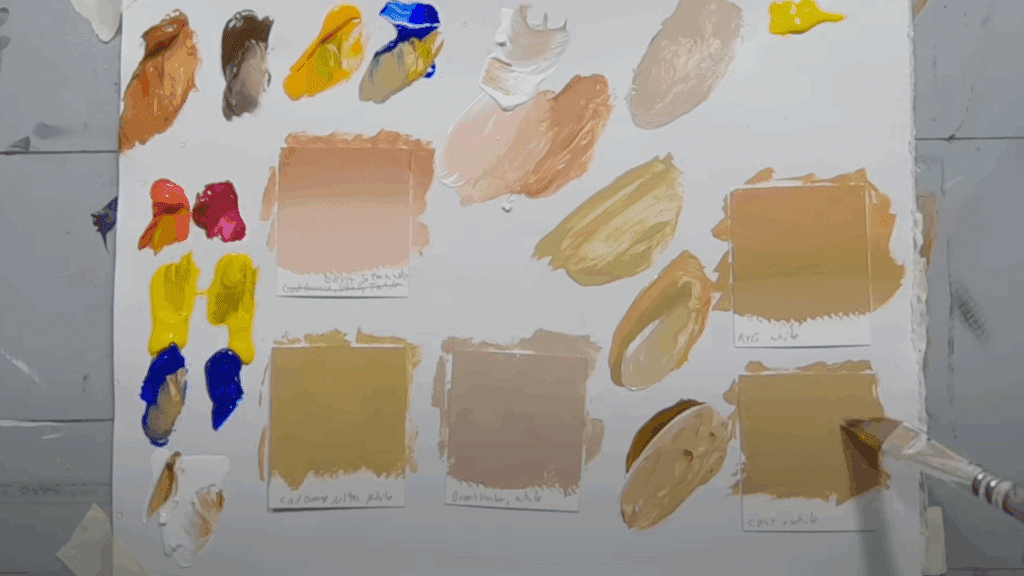
With cyan (phthalo blue), magenta (quinacridone), and yellow, mix a purple base first (cyan + magenta) and slowly add yellow. Adjust with extra magenta or yellow for warmth, or more cyan for cooler browns.
This method produces diverse, transparent mixes and teaches how to make brown using distinctive colors.
Step 7: Lighten and Adjust Browns
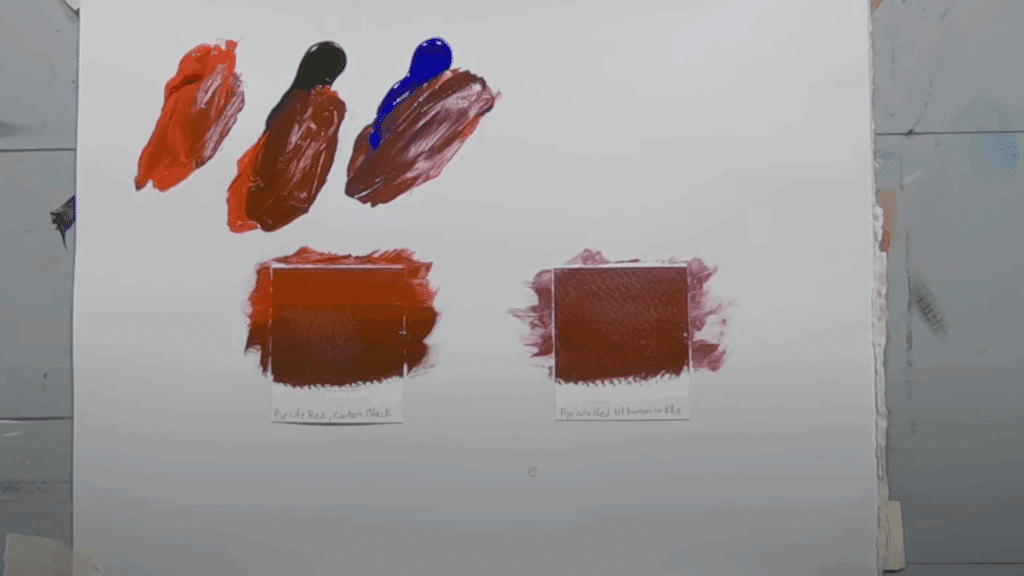
Add white to any of your brown mixes to create lighter tints. Burnt sienna with white gives a warm, peach-like shade, while burnt umber with white makes a cooler, neutral tint.
These variations are excellent for enhancing skin tones, adding highlights, or achieving natural textures.
Click here to access the YouTube tutorial by Chris Breier on how to make brown
Essential Tips for Accurate Mixing
Mixing colors is easier when the right tools and habits are in place. These simple tips help artists create smoother blends and more consistent results.
Use a Palette Knife: A palette knife helps blend paints evenly, minimizing waste. Keep it flat for smooth mixing and clean it often to prevent muddy colors.
Work on a White Palette: A white background shows the true shade of your mix. Test small dabs along the edge before painting, and avoid tinted palettes that distort color.
Keep a Color Journal: Write down the ratios of colors you mix so you can recreate your favorite browns later. Add small swatches beside your notes as a quick reference.
Test Before Applying: Paint often dries differently from how it looks wet. Swatch your color on scrap paper or canvas, then let it dry fully to check the final shade.
Adjust in Small Steps: Add color slowly using just the tip of your brush or knife. Small changes are easier to control and help you match your reference more precisely.
With the right tools and a few mindful habits, mixing colors becomes less of a challenge and more of a creative skill. Each careful step adds confidence and brings you closer to mastering the shades you imagine.
Fun Practice Ideas to Try for Pro Blending
Once you know how to make brown, mixing it becomes a lot more enjoyable, especially when it’s tied to small, creative exercises. These ideas offer artists the opportunity to experiment and see the full diversity of this color.
Create an Earth Palette
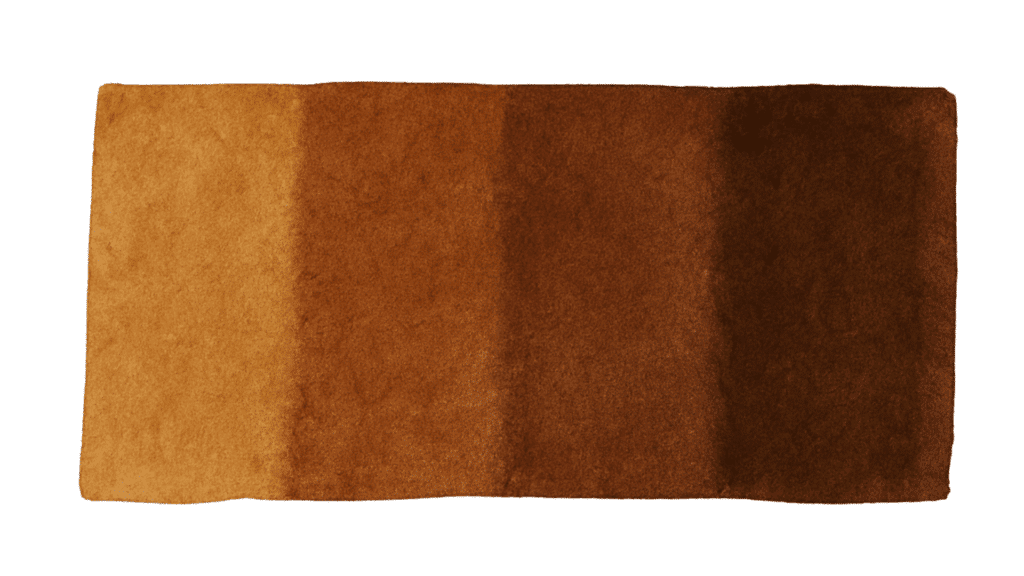
Try mixing browns that match real-world textures such as soil, tree bark, or stone. Compare your mixes with photos or objects around you and see how closely you can match them.
Paint Seasonal Themes
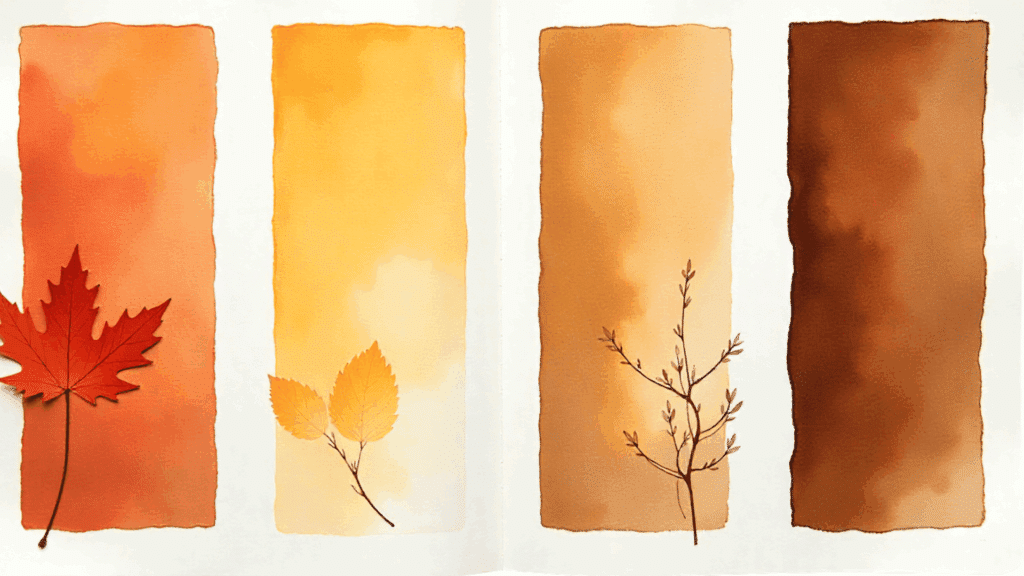
Use warm browns for autumn leaves, cool browns for winter shadows, and lighter shades for summer sand. This helps you practice controlling temperature and mood in your work.
Practice Skin Tones
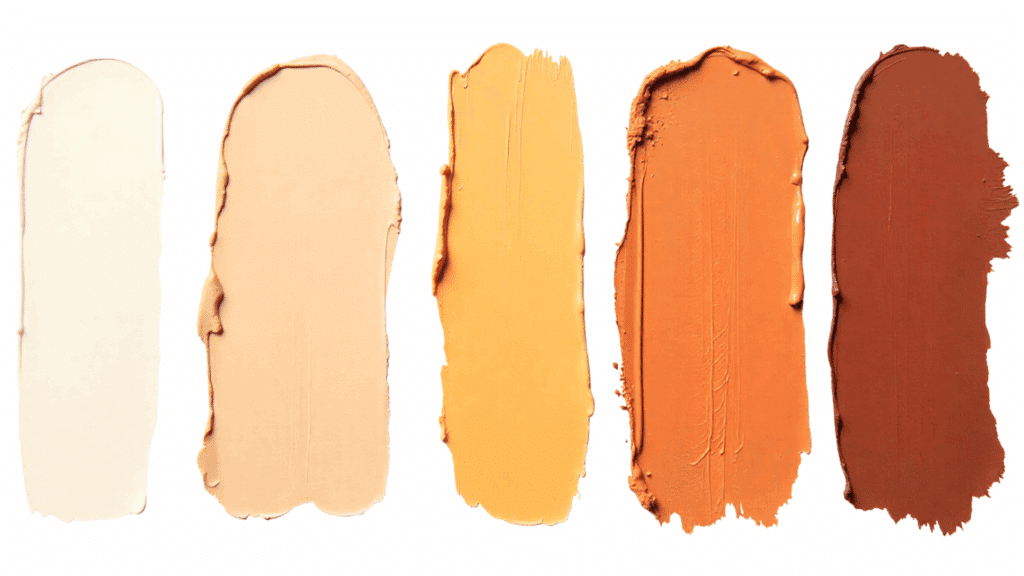
Blend different shades of brown with white, yellow, or red to create realistic skin tones. This is a great exercise for portrait painting, helping to refine color sensitivity.
Make a Swatch Chart

Fill a page with small boxes of every brown you create, labeling the color mixes underneath. Over time, this becomes a handy reference sheet for future paintings.
Common Mistakes to Avoid When Mixing Brown
Creating the perfect brown paint might seem tricky, but avoiding these common pitfalls will save artists time, materials, and frustration.
Whether someone is a beginner artist or just looking to improve their color mixing skills, these mistakes are easy to make but even easier to prevent with the right knowledge.
Adding Too Much of One Color at Once
Pouring large amounts of paint makes muddy, unbalanced browns that are difficult to correct. Add colors gradually, one drop at a time, and mix well before making any further adjustments.
Starting with Dark Colors First
Beginning with black or deep blue makes it nearly impossible to lighten the mix later. Always start with lighter shades, such as yellow, and then carefully build up with darker tones.
Using Cheap or Low-Quality Paints
Weak pigments result in dull, lifeless browns with little depth or richness. Choose good quality paints, such as acrylics or oils with strong pigments, for better results.
Not Testing Your Mix First
Applying untested paint directly to your artwork risks ruining your piece. Always test the brown on scrap paper or a palette before committing it to your canvas.
By avoiding these seven common mistakes, you’ll be mixing beautiful, consistent brown colors in no time. Remember that great color mixing comes with practice, so keep experimenting.
The Last Blend
Brown may seem like a humble color, but in the hands of an artist, it becomes a powerful one. From soft tans to deep chocolates, every shade adds character, mood, and realism to a painting.
Making it by hand gives more than just control, but it sparks creativity and opens the door to countless variations.
The beauty lies in small choices, like adding a little more red for warmth or a touch of blue for depth.
Now it’s time to pick up the brush, test a few blends, and see how many browns can come alive on the palette. Which one will become the next favorite shade?

